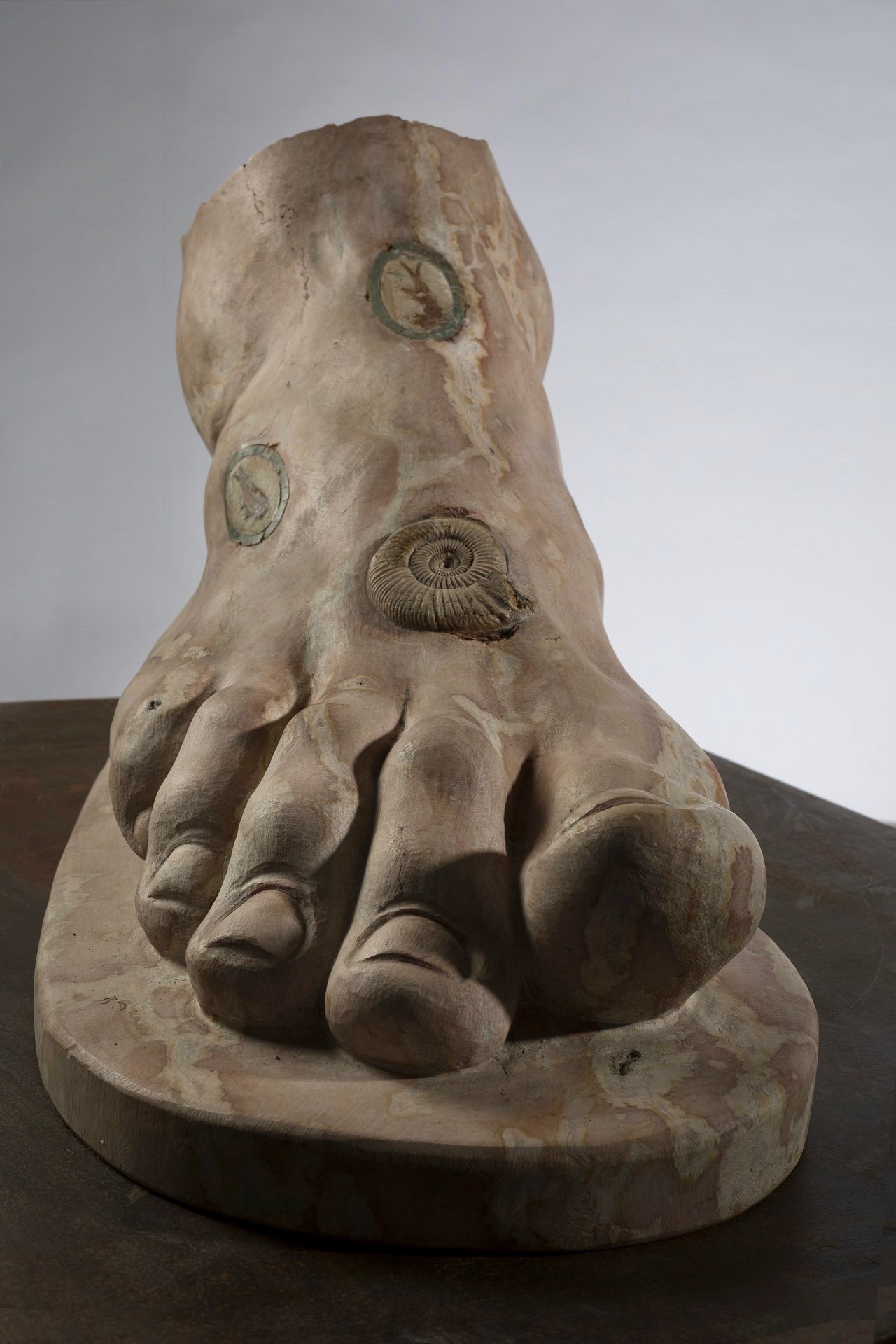Massimiliano Pelletti
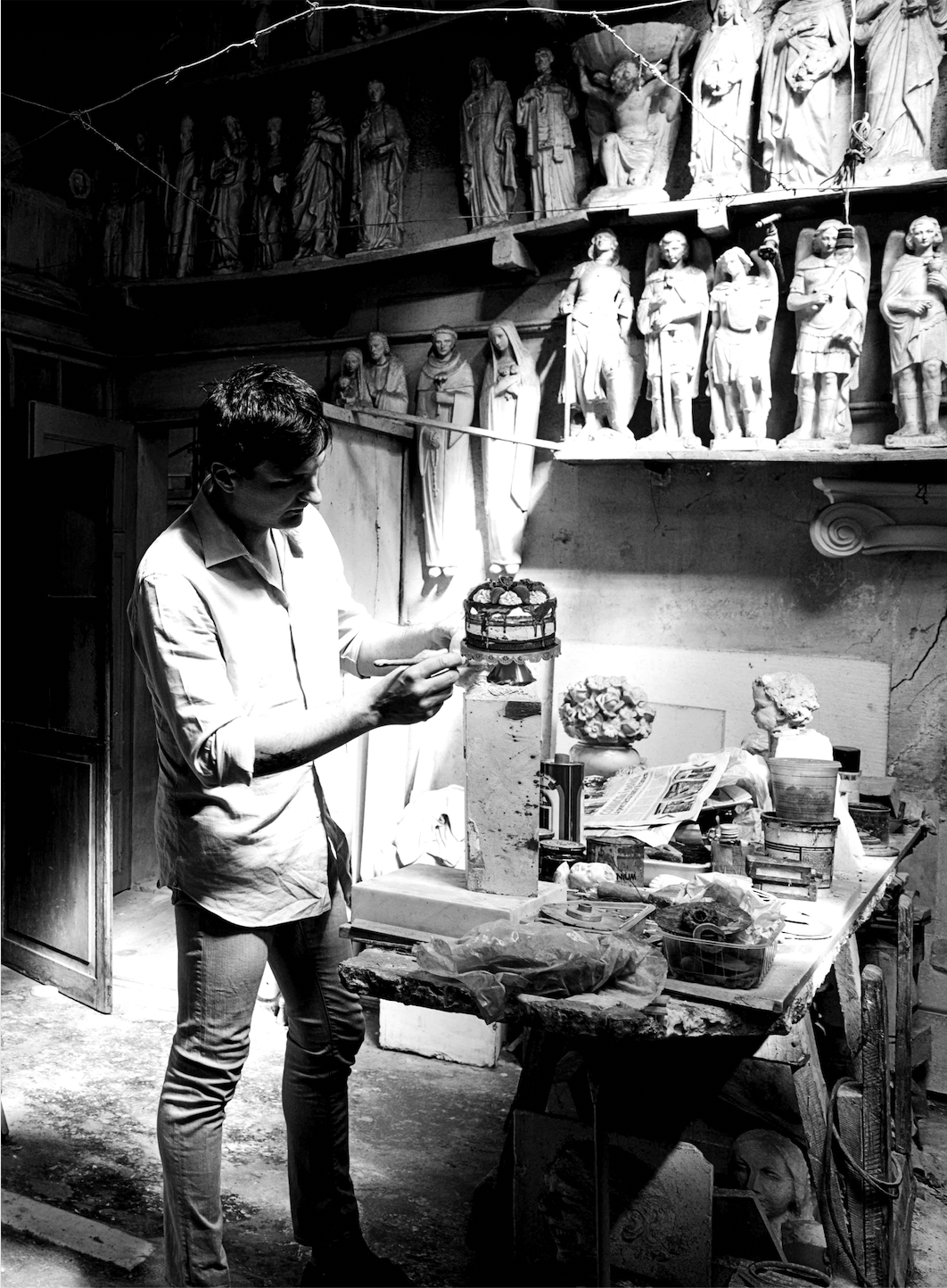
Whilst engaging in a debate with a friend over Immortal Trans-humanism versus evolution and what it is to be human; what came to my mind were the sculptures by Massimiliano; they engage the reality of that argument, differences that set us apart, the unique imperfections versus perfections and the natural world of evolution. Pelletti’s artworks narrate the argument of a philosophical ideal; as a philosophy student he references the theory of Aesthetic Philosophy, quoting “perfection is born at the exact moment with the maturation of a fruit”. There are arguments and paradoxes to this theory of Aesthetic perfection, as his artworks emphasise. He works with the natural resources of crystals, stones and marble, turning it around as the focus of an artwork. The ancient characteristics in nature, from the veins of marble, to crystalline formations in crystals; to emphasise the human condition as an individual rather than as flawed. If anything it is the uniqueness of an individual that is the perfection, rather than creating this illusion of an ideal. Massimiliano creates artworks that challenge these conceptions. You just have to watch the blue planet series, as David Attenborough narrates the wonders and complexities of the natural world, as he illuminates the perfect balance, that balance that has created the unique in its variety and how as the whole it is in harmony and in perfect balance. However, Massimiliano has a strong appreciation of the Renaissance classics, as this is the world where he grew up, so he confronts the very concept of Aesthetics.
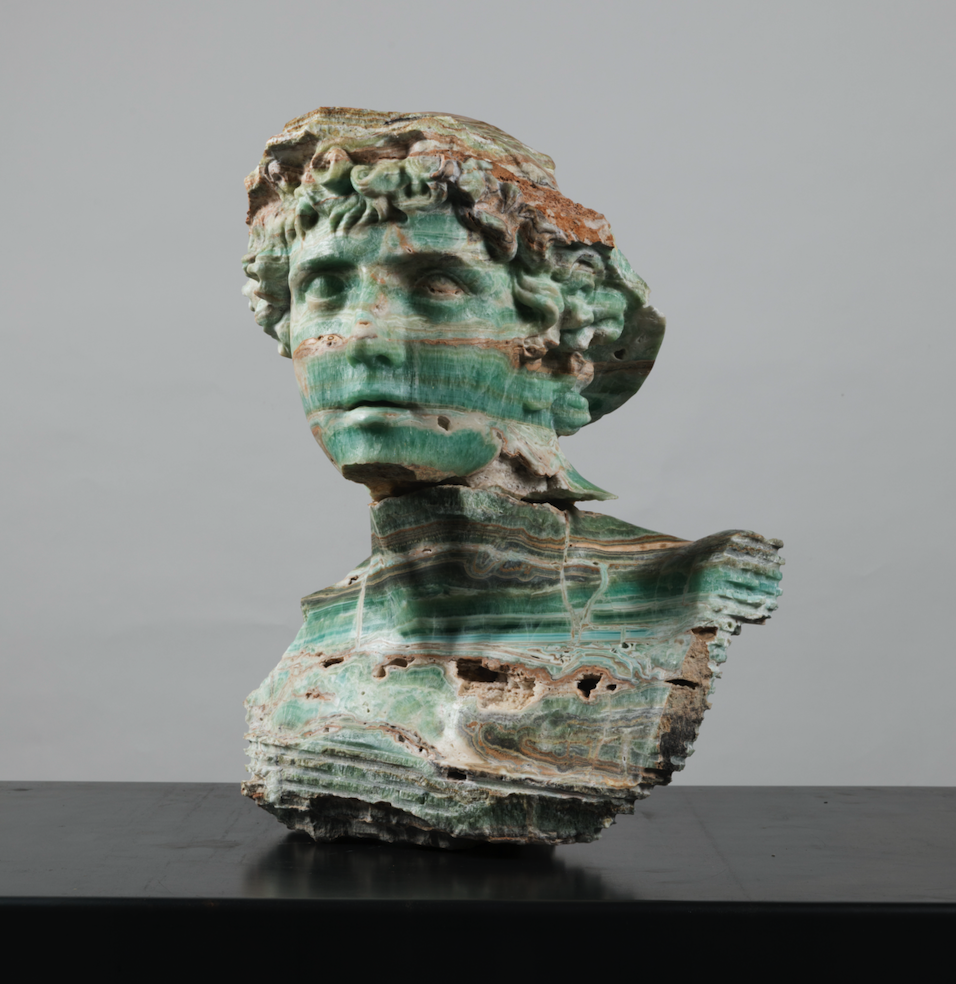
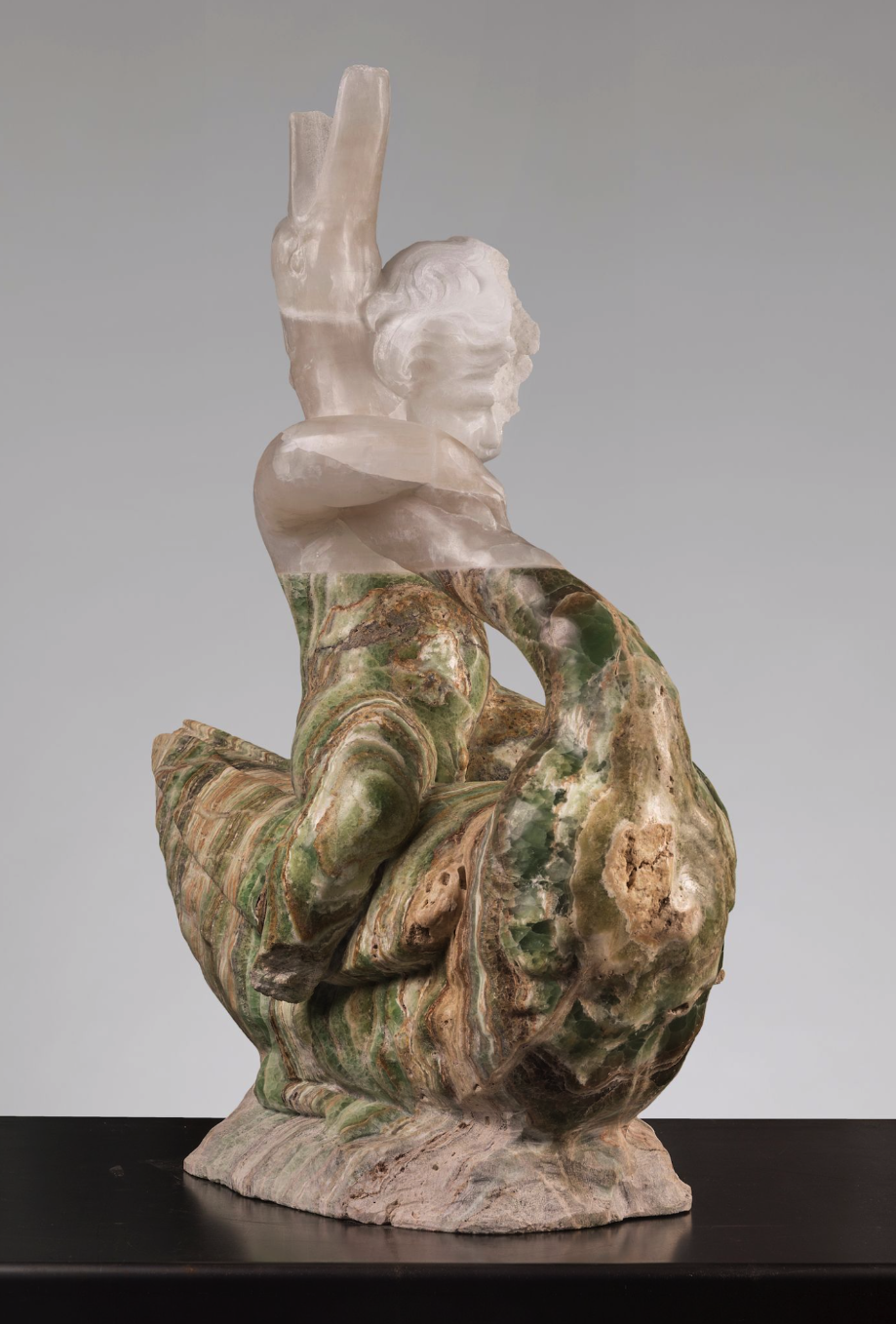
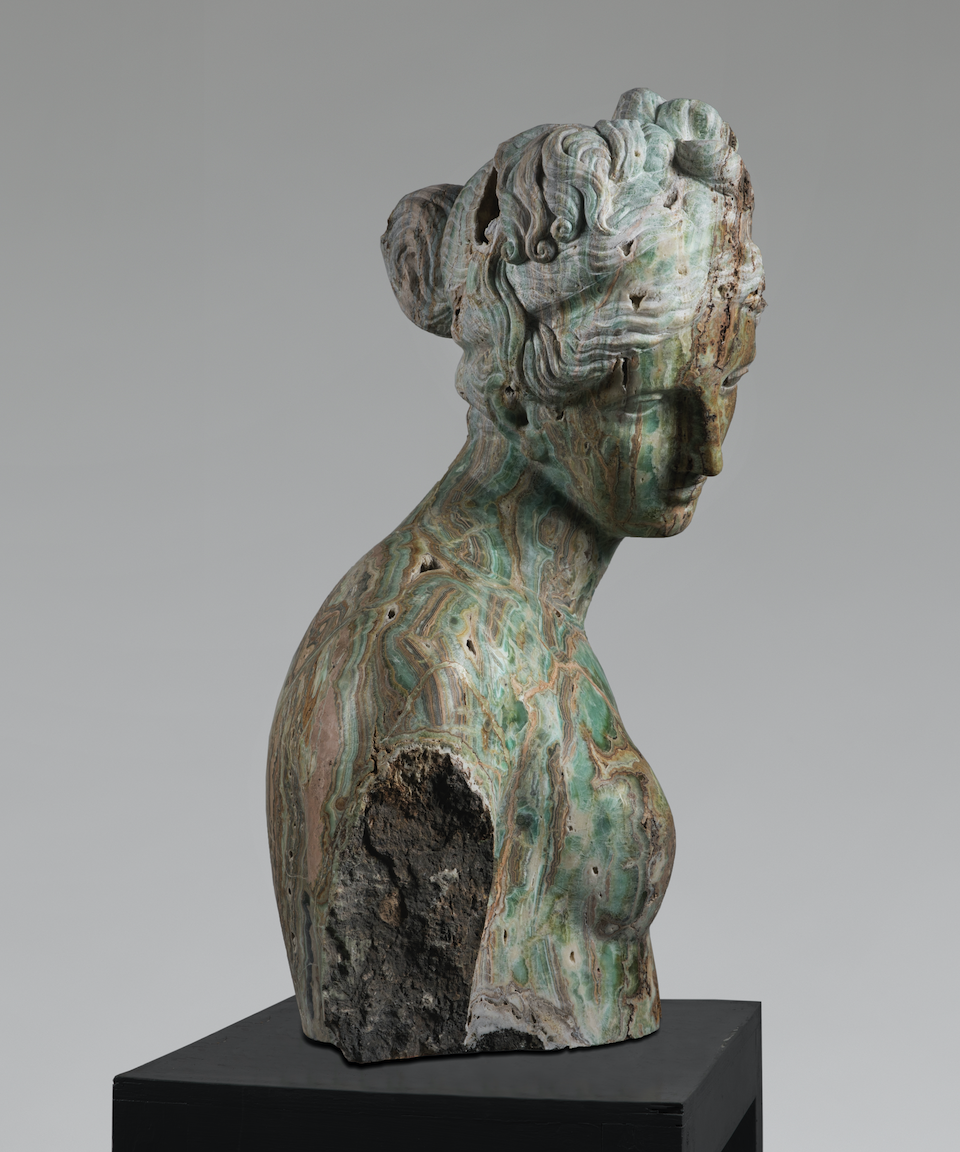
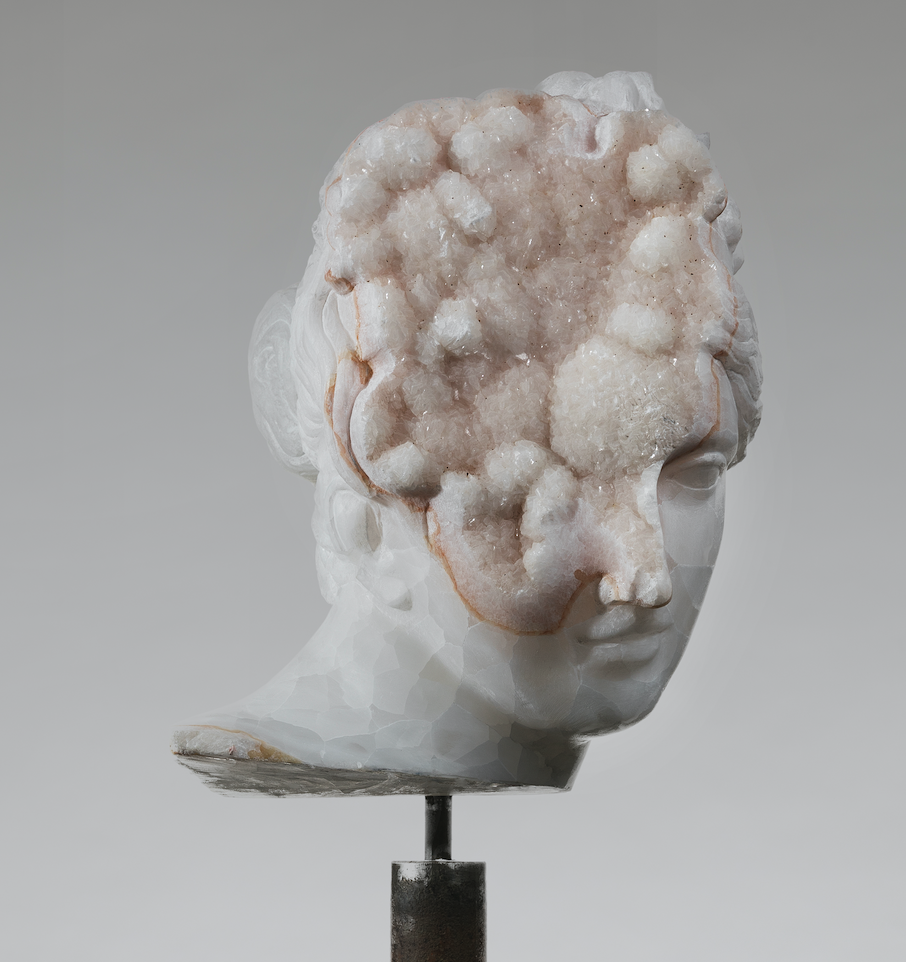
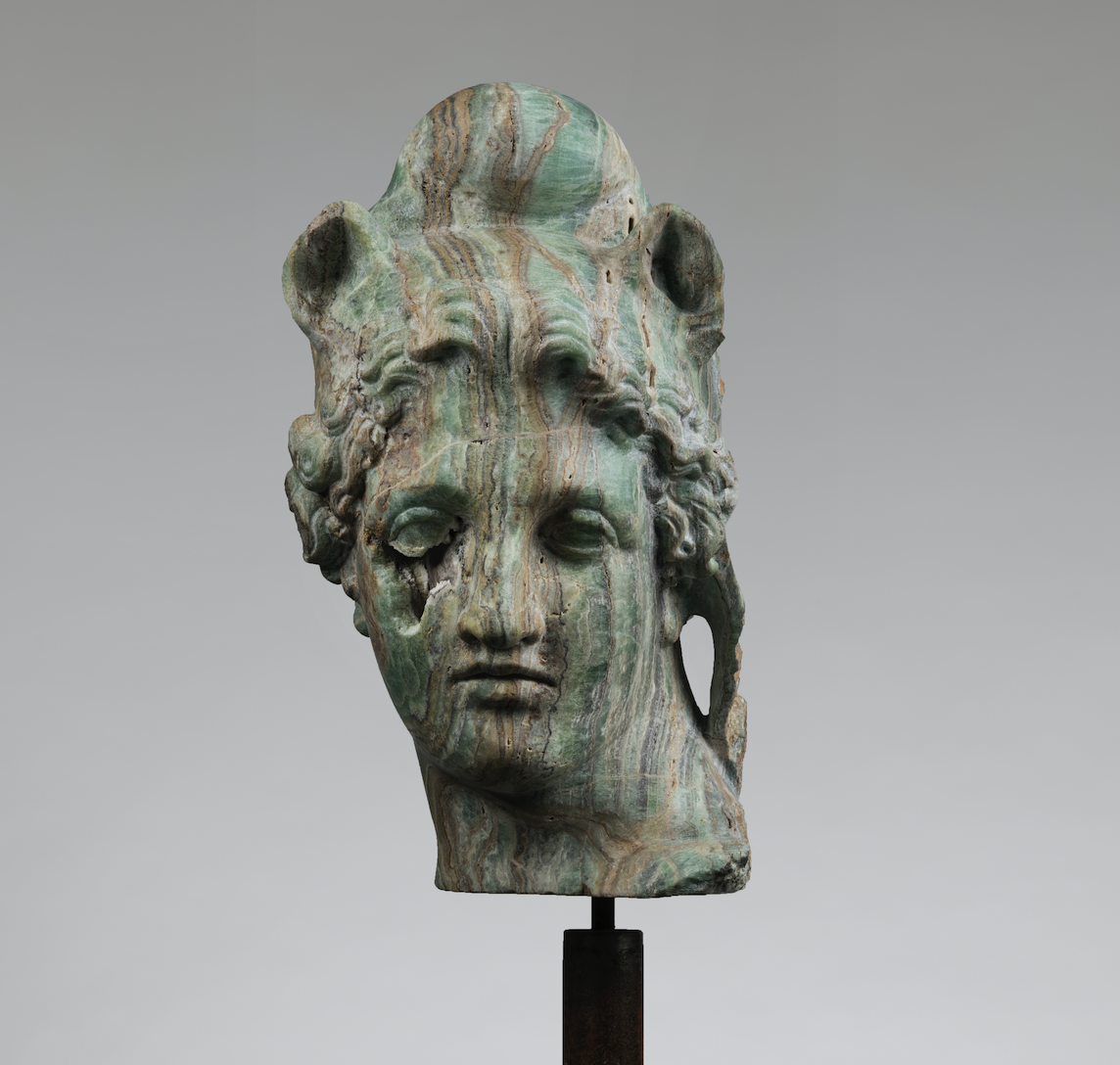
Pelletti’s sculptures imbue that sense of being an archaeologist that discovered some abandoned and broken artworks. “I was born in a place under the Apuan Alps, a mountain range in Italy; Michelangelo came here to get marble in 1500, my grandfather was a sculptor, it was enough to breathe this air to educate me in art” Massimiliano tells me. His grandfather was a respected and famous sculptor in his own right, he was appointed to restore Michelangelo’s Pieta, after it had been partially destroyed. Massimiliano talks about being a boy, about the influences in his grandfather’s studio, making swords “I played surrounded by the sculptures that watched me. For me, taking clay and trying to make puppets was a normal thing, my daily game.” He describes how he loved the atmosphere and how it shaped him. Later in life after studying Philosophy at the University of Pisa, he found himself repeating these games; in a different and mature way, he explains. Now people call him an artist, however in reality he just continues to play, he clarifies. He lives and works in Pietrasanta in Tuscany Italy, often commuting to Milan. Massimiliano describes how every morning whilst on his way to his studio he visits the historical centre of the town, the Michelangelo’s bar, the same bar where the artist agreed to sculpt Pieta. On the 500 year anniversary, Pelletti himself was honoured to produce a commissioned artwork, in honour of Michelangelo, that now stands in the town of Forte dei Marmi.
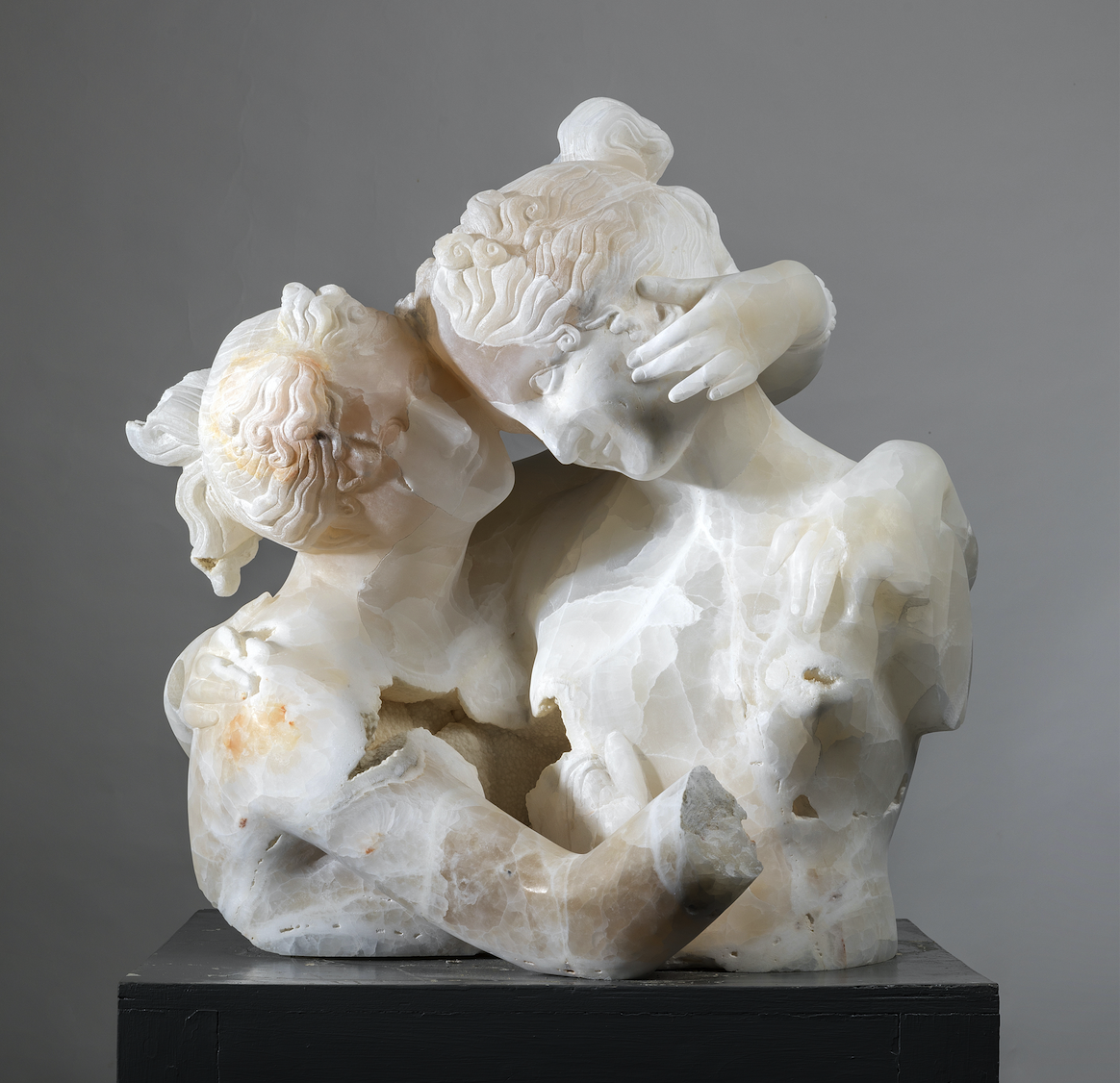
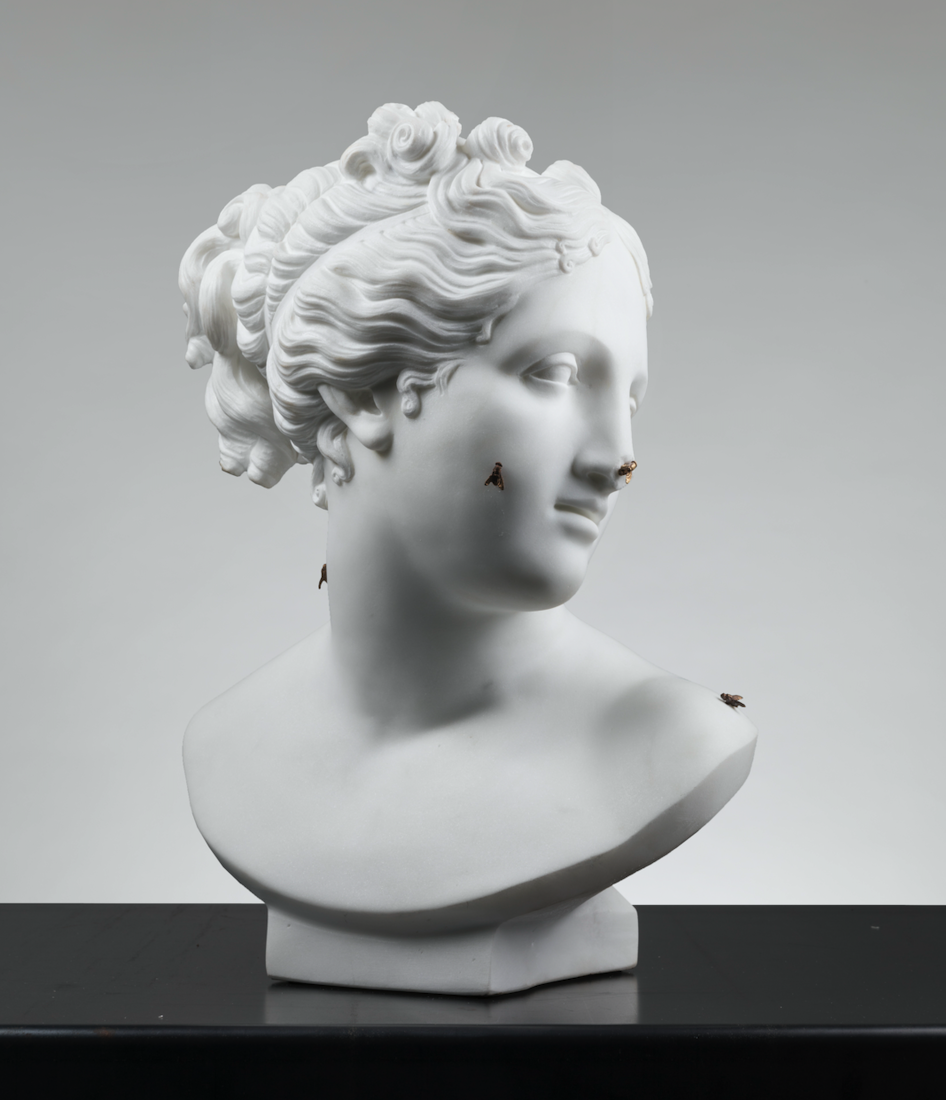
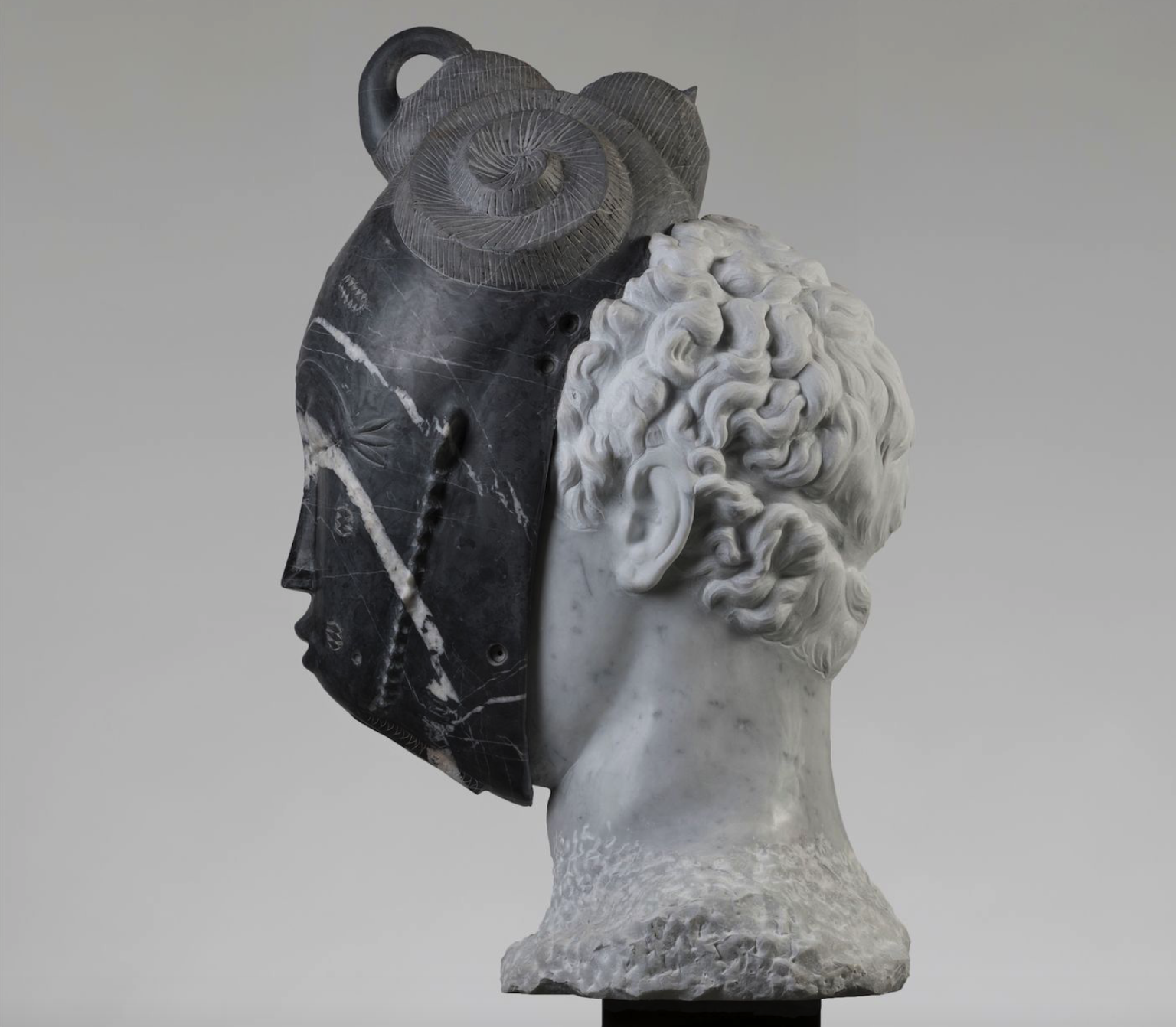
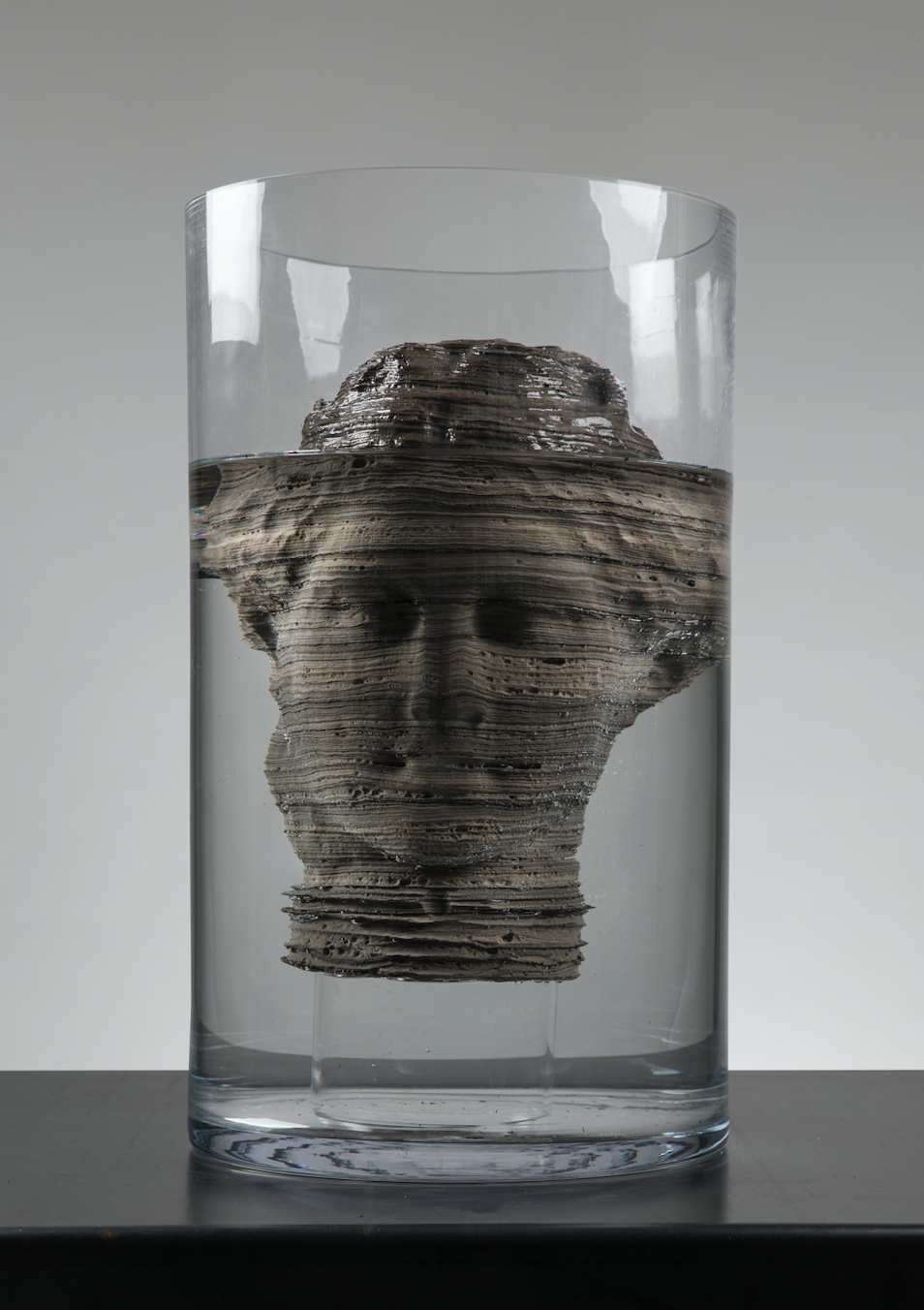
I asked him about narrative and if it was important, he replied “Very important, the material has its own story to tell; the marble and the stone are millions of years old, the history of the world is hidden within them”. He explains how he tries to work as he defiles the shape, to convey infinite stories. Pelletti’s works communicate his feelings and passions towards society. A world that has become standardised, creating a nostalgic and decadent style, using the old plaster models he inherited from his grandfather, and he interprets them in a contemporary way, using different materials that one would normally not use in sculpture, he tells me. He explains it as contaminating the work with different elements, using stones that are imperfect, not compact, with cavities and splits. Describing the material itself dictating the rules, these imperfections of these classical divinities, “It is a little bit of a mirror of ourselves, beautiful and torn” Massimiliano explains. He uses a variety of materials, holding onto it for about a year, he tells me, studying it so he can understand and work it better before he decides and attempts his sculpture. He wants to express himself in the best way possible, and not waste materials, especially when working with semi precious stones like emerald green onyx.
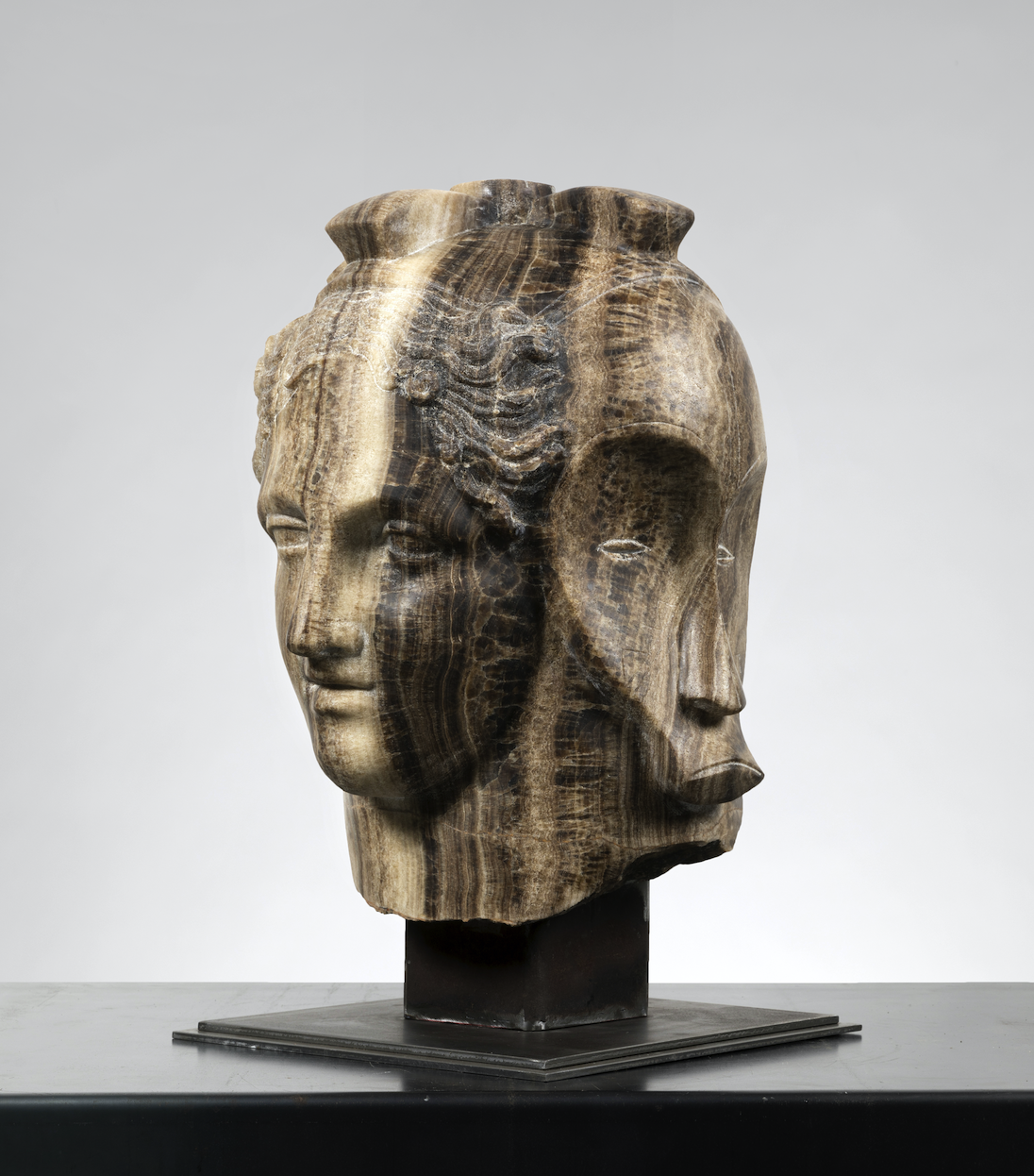
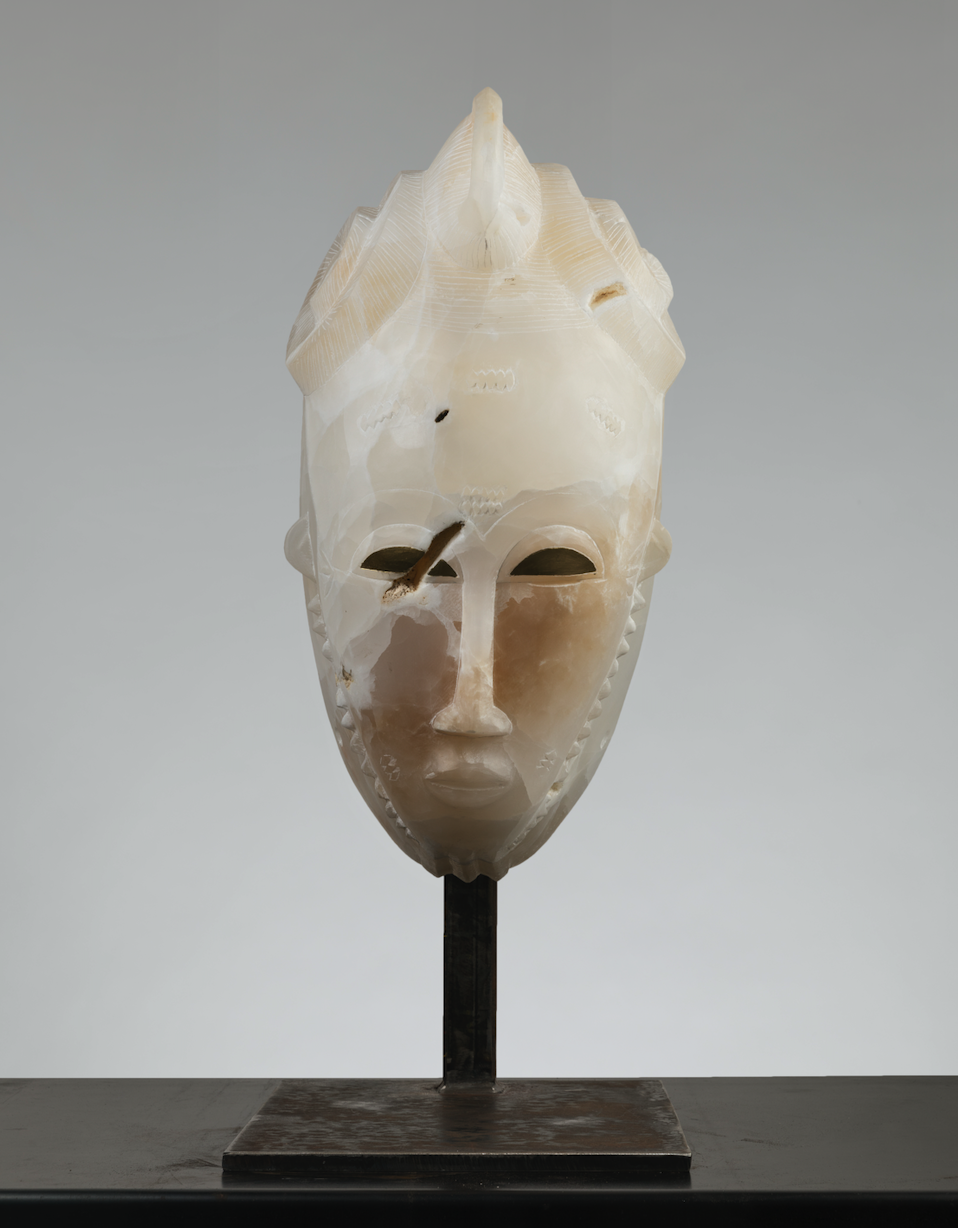
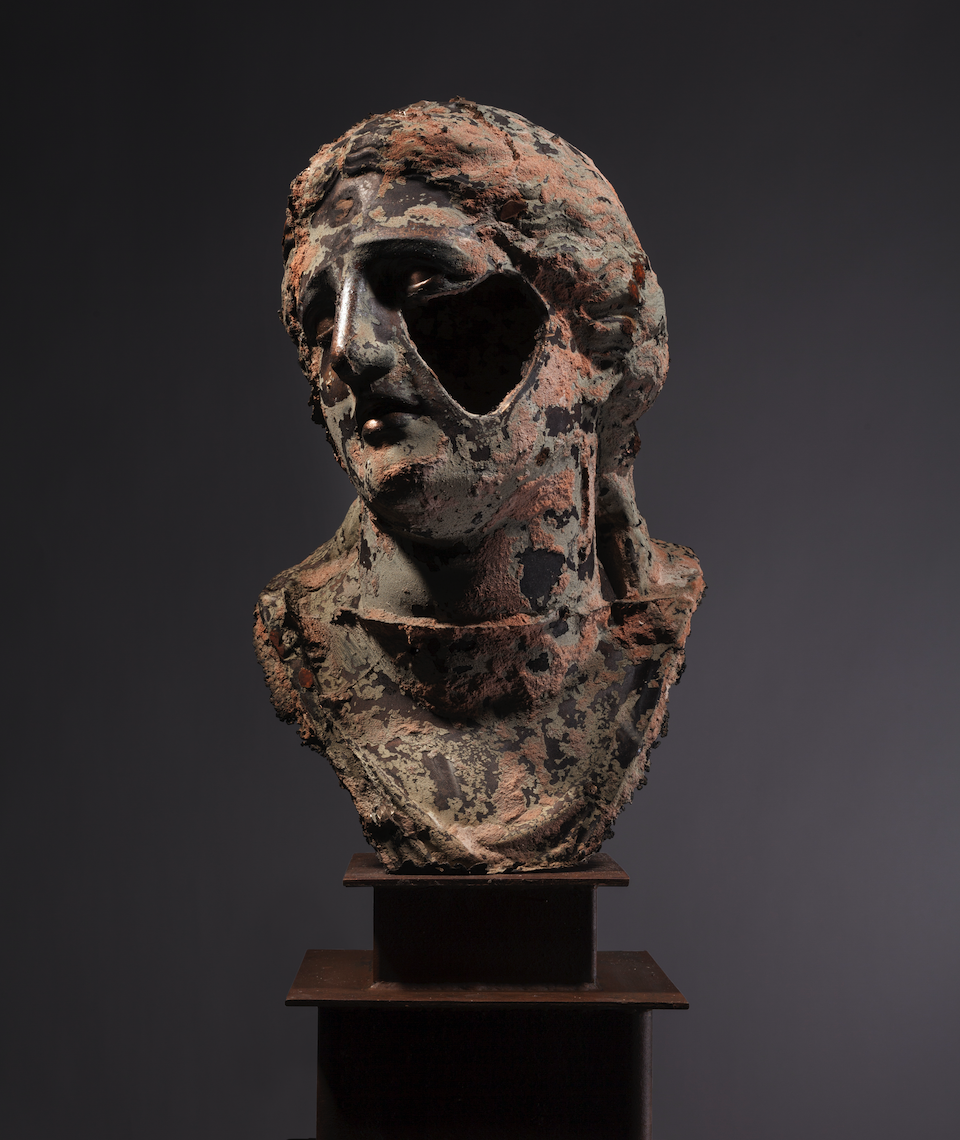
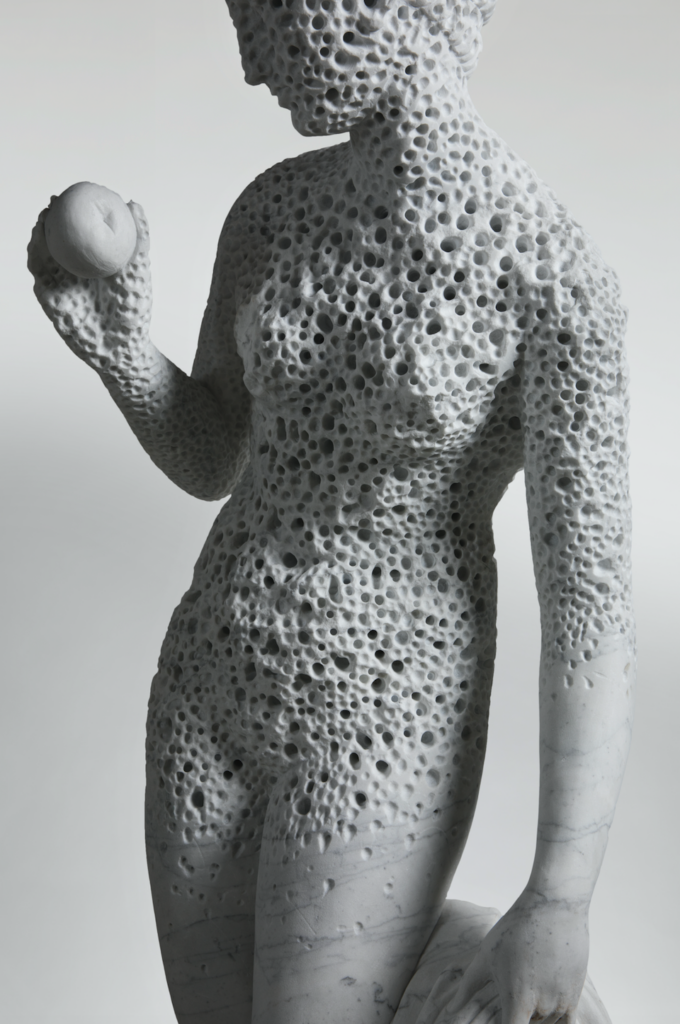
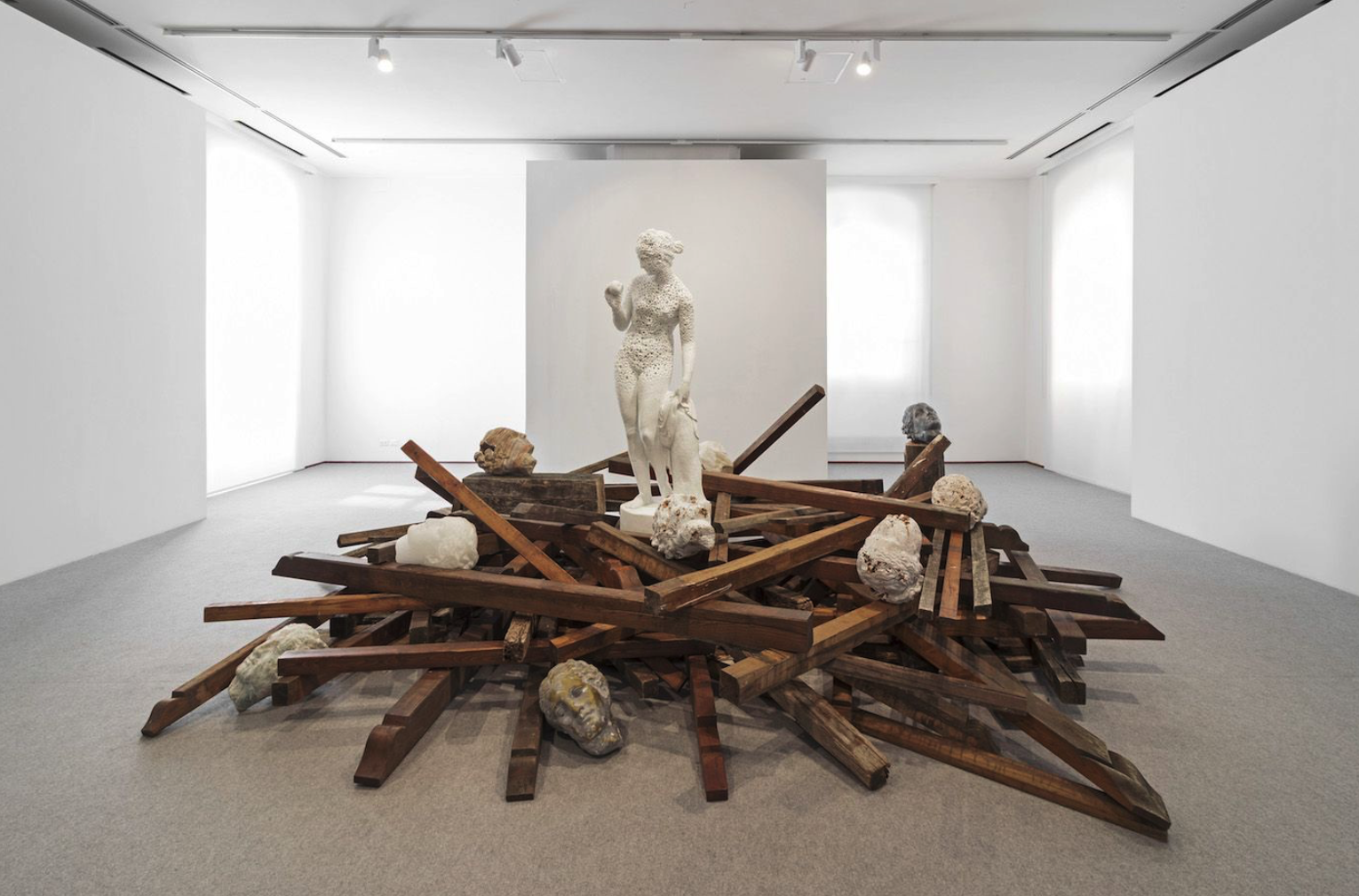
Although Massimiliano sculptures raise questions on the perception of beauty, when I asked him why he wanted to be a sculptor, he described it as a necessity “being able to express poetry by transforming matter”. After graduating from University, Pelletti was immediately involved and able to immerse himself as a sculptor for important exhibitions, he tells me. He describes his style as classic sculpture, using imperfect materials, as this is the theme of his artwork, that the personality of the material is to live in the artwork. He is currently sculpting a series of artworks, creating a mix between classical Greek-Roman art and ancient African art. I asked him to describe his greatest achievements “ There are many important exhibitions in museums, and the Venice Biennale, but when I think about my greater success I think of my son”. And then I think of how lucky this boy is to be living in this town, learning from his own father. And what his perception of beauty will be as the next generation moves into the future.
Interview: Antoinette Haselhorst
